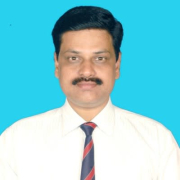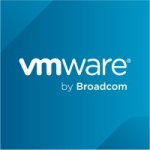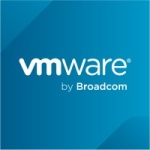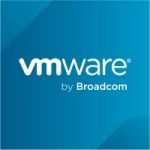What is our primary use case?
My primary use case is infrastructure monitoring. This is a very in-depth monitoring tool and the use cases have been to monitor multiple hardware platforms like Dell and UCS. This includes network hardware as well as the storage solutions like Unity boxes. We've also monitored the entire SDDC stack by leveraging the different management packs.
How has it helped my organization?
vROps provides us with visibility from apps to infrastructure and across multiple clouds. It has immense monitoring capabilities when we talk about the vCenter, which includes clusters that host virtual machines and data stores. Not only that, but with vROps version 8, you have in-built management packs for AWS and Azure. This means that you can monitor these public clouds from the same solution and you do not have to purchase any other management packs.
With vROps emerging into the application field, we can now deploy the Telegraf agent and have the application monitoring done in vROps as well. From infrastructure to application monitoring, vROps has a wide range of visibility into the monitoring spectrum.
One of the most useful features that this product provides is proactive monitoring with the help of alert optimization. It detects anomalies and I know when something is about to go wrong in my inflow, or even that something could already be happening. The alerts are available by default and this helps with early detection. Other than the alerting, the capacity planning functionality is also a proactive measure that is very useful.
Proactive monitoring is something that takes time to stabilize because once you download vROps, it will take three months for the tool to stabilize and create a baseline. Once that is complete, it can perform proactive monitoring and will help to analyze the underlying issues.
It has absolutely helped us to reduce downtime. When we talk about the infrastructure and detecting problems, the notifications and alerts provided by vROps have allowed us to avoid application failures resulting from the infrastructure not working correctly. It is difficult to estimate how much time it saves because different customers have different environments and different timelines.
With respect to workload placement, it is a feature we use and it's incredibly useful. That said, there are a few things that can still be enhanced because certain customizations are missing. If we are referring only to VMware workload placement then the functionality works great. It works well on-premises but not for the public cloud.
Using vROps has led to improved data center efficiency, which has, in turn, reduced the cost of our infrastructure. Specifically, the VMs were on different ESXi hosts and now we've consolidated some and distributed others. The cost savings come from a reduction in hardware requirements as well as licenses.
We have integrated vROps with vRealize Log Insight and it's a great thing, firstly, because the integration is very easy. The best part is that you can easily create alerts within Log Insight, and then push them to vROps. Unfortunately, we do have a problem with getting the triggered object when we send alerts from Log Insight to vROps but other than that, the integration works seamlessly. The system is best utilized if whatever integrations you have with vROps are integrated into Log Insight as well. That is when it starts giving you value.
The integration with Log Insight has improved our troubleshooting capabilities. For example, there are certain events like a disk consolidation failure where there was an alert, but we weren't able to capture it with vROps because it isn't able to capture everything. However, we were able to find it using Log Insight, which then allowed us to capture the event that triggered the alert. This helped us to save the application that was running on the virtual machine.
Implementing vROps and the right sizing has really helped the customers to save a lot of resources with respect to CPU and memory. We were able to identify what resources and VMs were idle versus what was powered up and in use. The reports helped to highlight where it was oversized and we were able to downsize accordingly, ultimately saving money.
What is most valuable?
The most valuable features are capacity planning and predictive analysis. These are some of the most outstanding features that vROps has as a monitoring tool.
The ease of usability, interactive dashboards, and graphs are features that are different when we talk about the other monitoring tools. The dashboards and the interface are very easy to understand, very lively, and very dynamic.
This product is very user-friendly. It is also very easy to deploy and because it's a VMware product, we always have access to VMware support.
What needs improvement?
The workload placement can be improved. It can be more diversified because it does not provide many options with respect to segregating the workload.
The what-if analysis section is not very advanced and there is a lot of room for improvement. For example, it should include a wider spectrum when we talk about the data center cost assessments and the data center workload assessments. It should be able to consider a use case and predict what the capacity will be after a specified period of time.
For how long have I used the solution?
I have been working with VMware vRealize Operations for more than five years.
What do I think about the stability of the solution?
This product is really stable when we talk about monitoring. The only condition is that it has to be sized well. If vROps is sized properly, it will give you a value with respect to monitoring. If it is not sized well, where it has too few nodes and the number of objects is really large, or the workload is not placed properly across all nodes, we might face issues. It happens because the workload is not correctly distributed. Importantly, we do have options for properly sizing everything.
Other than this single issue, it works fine.
What do I think about the scalability of the solution?
Scaling is easy to do. For example, adding an extra node is easy and can be done in 30 to 40 minutes. All you need to do is add a data node and the vROps internal architecture will automatically replicate and share the data across nodes.
There are between 50 and 60 people on my team. The roles vary from engineers to consultants to architects, all of whom work on the product. We have implemented this product for more than 50 clients, some of which had huge environments. For example, we have worked to implement environments with more than 40,000 virtual machines.
How are customer service and technical support?
Technical support is pretty good. Most of the time, I've been able to get solutions to my problems. There have been times when we had trouble that they were not able to find a solution for but other than that, the support is okay.
Which solution did I use previously and why did I switch?
I have knowledge of other products that are similar but I'm biased toward vROps because that is the only one that I have been working on.
How was the initial setup?
This solution is very easy to deploy.
It is deployed on-premises but with the latest version, they introduced vROps on the cloud as well. This means that they now have a SaaS offering in addition to the on-premises solution.
When deploying in a production environment, it will take between one and two hours to complete. The implementation plan depends on the SMEs that are working on the project and how stable your insight is. The timeline is very personal and it can really vary.
When we talk about deployment, there is no fixed plan when we talk about vROps. The reason is that it's a very customizable tool and the entire sizing depends upon the sizing chart that is provided by VMware. Essentially, whatever the requirements of customers are, we plan according to that, and then we follow the deployment rules or the deployment process that is given by VMware to deploy the tool.
What was our ROI?
Our clients have seen a return on investment by way of cost savings through both proper sizing and efficient workload placement. What they get from this solution is absolutely worth the cost. It's a monitoring tool, so return on investment doesn't happen on day one.
When you deploy the tool, it takes three months before you start monitoring the data. Then, you start getting into the metrics, and then after that, maybe after a year or so, you will start realizing how useful it is. This will be the case with all of the monitoring tools.
What's my experience with pricing, setup cost, and licensing?
This is an enterprise-level product and everything is included in the VMware Suite license.
What other advice do I have?
My advice for anybody who is implementing this product is to size the environment very well. This is the first analysis that we do; we look at how big the environment is that we want to monitor and how many objects will be there, and compare this to the VMware sizing guide. You really have to analyze that and size your environment well because if it is done properly then it will give you a lot of value in monitoring.
Overall, this is a good monitoring tool and I think it's the best one for me. That said, there is always room for improvement.
I would rate this solution a nine out of ten.
Which deployment model are you using for this solution?
On-premises
Disclosure: My company does not have a business relationship with this vendor other than being a customer.


















